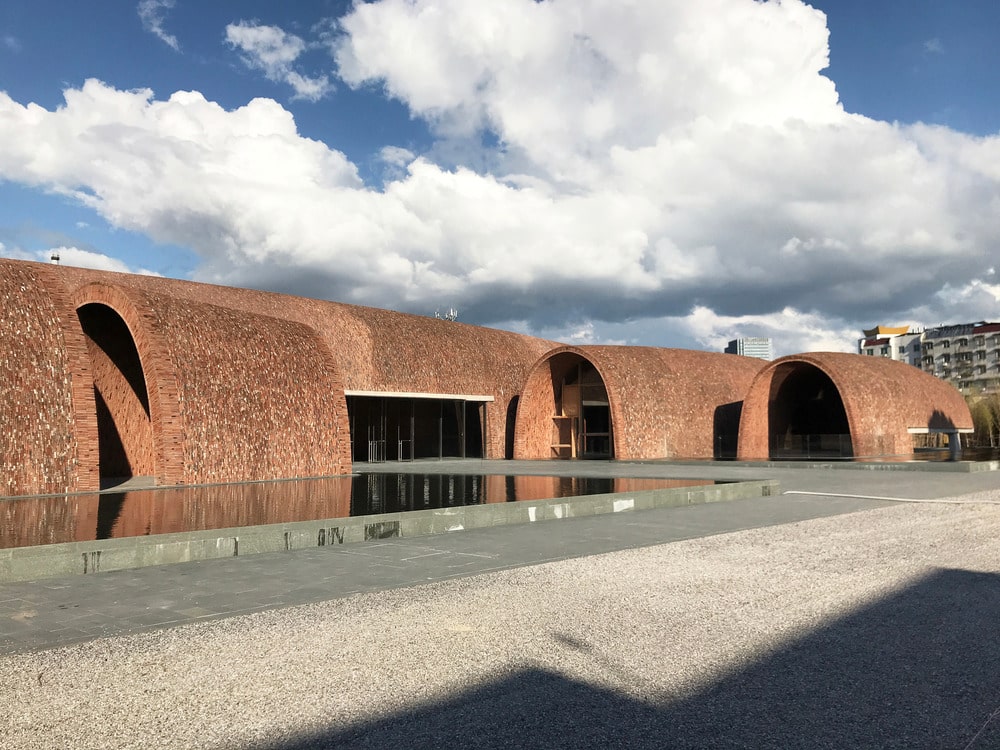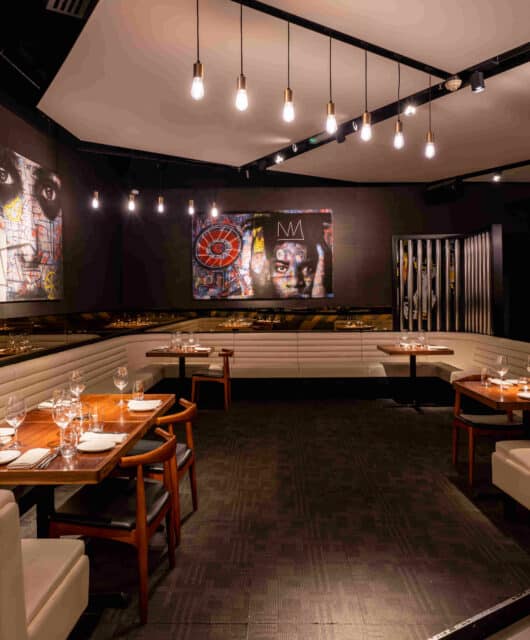 Located in the centre of the historical area, the site of the Museum is adjacent to the Imperial Kiln ruins surrounding many ancient kiln complexes. The project is by Studio Zhu-Pei.
Located in the centre of the historical area, the site of the Museum is adjacent to the Imperial Kiln ruins surrounding many ancient kiln complexes. The project is by Studio Zhu-Pei.
Jingdezhen is known as the “Porcelain Capital” in the world because it has been producing pottery for 1,700 years. In the Ming and Qing dynasties, Jingdezhen exported a huge amount of porcelains to Europe.
Jingdezhen was growing naturally fitting in the valleys surrounding rivers, hills, and mountains because of the porcelain industry. The early settlements of the city developed around kiln complexes which included kiln, workshops, and housing. The street pattern was generated by nature and the porcelain industry. Most of the small alleys in between kiln complexes have always approached the Chang river in order to transport porcelain products to the river. The main streets have always been along with Chang river to bring all businesses and commerces together.
Situated on a fairly restricted historical area adjacent to the east side of the Imperial Kiln ruins, the plan of the Imperial Kiln Museum was aligned with the north-south street grid of Jingdezhen. With its entry, water pools, and bridge facing west, embracing the open file of Imperial Kiln Ruins to welcome visitors from Imperial Kiln Relic Park. Public pedestrians can wander through the forest under the green canopy, going through the bridge, flowing into the foyer of the museum.
Concept
The Imperial Kiln Museum comprises more than half a dozen brick vaults base on the traditional form of the kiln, each of the vaults is of a different size, curvature, and length. They were naturally applied to the site, carefully integrated with many existing ruins including a few ruins that were found after the construction.
The unparalleled, liner, and arched structures of the museum, like old kilns, reach below the level of the street to not only give the flexibility to adapt itself into the complicated site, but also to achieve the intimate scale of interior space. This strategy – in part also as a response to the height of surrounding historical buildings – leads to productive ambiguity in relation to the building’s horizontal datum. The “insertion” of the building into the ground of the site produces a series of public spaces at street level. More importantly, it allows for the design of a number of more intimate open vaults, and courtyards within the museum. Most of those public spaces are covered under shaded and are protected from the rain because it is hot and it rains a lot during summer in Jingdezhen. One of those open spaces, two open vaults sited in both ends, will also reveal the traces of the historic fabric on the site
The architect was fascinated by local ancient kiln tectonic and material. Looking in the past, craftsmen built the brick kiln without scaffolding in a very special way. Thin and light brick kiln achieved a maximum interior space with minimum materials, the brick kilns appeared in organic forms reflecting heat flow from one end to another. The basic structure of the museum is an arch structure system, it is made up of concrete poured in between two layers of masonry brick walls. There is a small arch to be layout perpendicularly to connect two arches.
Using recycled kiln bricks to build houses and all kinds of buildings is a significant character in Jingdezhen because brick kilns have to be demolished every two or three years in order to keep a certain thermal performance of the kilns. The entire city was covered by recycled kiln bricks. Those bricks record warmth and are inseparable from the lifeblood of the city. In the past, the children would take a warm brick from the firing kilns to place in their schoolbags to keep themselves warm the whole day during freezing winter.
Even the light evokes active and tangible memories and is the proof of how ancient techniques can be reinterpreted and reread in a contemporary key. The interior natural light is achieved by both skylight and sunken courtyard and is inspired by smoke holes of the ancient brick kiln. The skylight in the hollow cylinder shape is distributed on the top part of the arch to provide natural light during daytime and artificial light at night time.
Photo credit: Tian Fangfang











